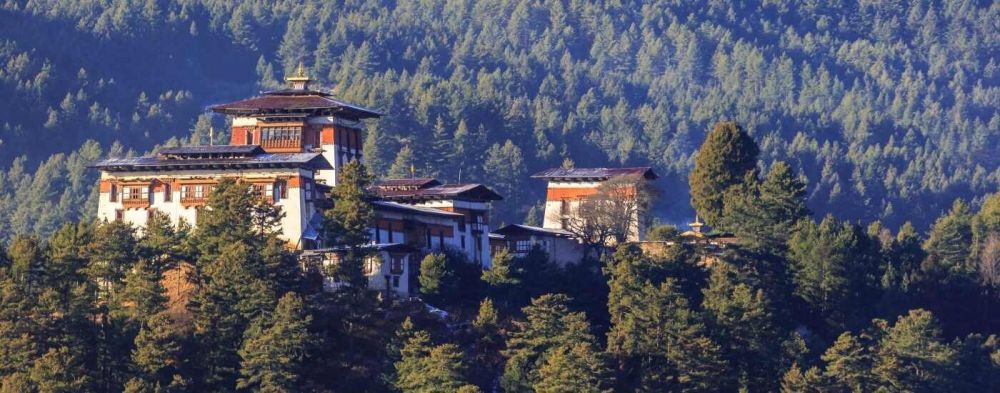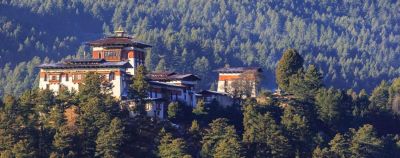

Jambay Lhakhang is one of the oldest temples in Bhutan, dating back to the 7th century. According to legend, it is one of the 108 temples built by Tibetan King Songtsen Gampo in a single night to subdue a demoness. Visitors can explore the exquisite architecture and vibrant murals of this cherished historic site, which holds significant religious importance. Engage with the local monks, witness daily rituals, and absorb the serene atmosphere. The temple is also famed for the annual Jambay Lhakhang Drup festival, a colorful celebration featuring masked dances and cultural performances.
The Bumthang Cultural Trek offers a unique way to experience Bhutan's spiritual heartland. This moderate trek traverses beautiful valleys and mountain passes, connecting a string of ancient monasteries and temples. Hikers can enjoy breathtaking landscapes, including lush meadows, pristine rivers, and pine forests. While on this trek, one can learn about Bhutanese village life and culture. Along the route, visitors will encounter traditional Bhutanese farmhouses and can appreciate the architectural style unique to the region. The trek can also be an opportunity to spot diverse wildlife and to immerse oneself in the tranquility of the Bhutanese countryside.
Kurje Lhakhang is a sacred monastery complex that holds great historical and religious significance. It is said that Guru Rinpoche meditated here in the 8th century and left his body imprint on a rock. The complex comprises three large temples surrounded by 108 chorten walls. The temples house impressive statues and paintings depicting the life of Guru Rinpoche. Visitors can witness locals circumambulating the temple or spinning prayer wheels, an act which is integral to their daily spiritual practice. The calm and spirituality of Kurje Lhakhang make it a must-visit for those interested in Buddhism and Bhutanese culture.
Established in the early 16th century by Pema Lingpa, one of the most important figures in Bhutanese religious history, Tamshing Lhakhang hosts some of the oldest wall paintings in Bhutan. The temple is a center for spiritual learning and meditation. Here, visitors can explore the artworks, relics, and witness students engaged in religious study. The temple's ancient and peaceful environment offers a profound sense of calm. In the courtyard, one might encounter pilgrims performing prostrations, which form part of a centuries-old tradition. The experience at Tamshing Lhakhang is both educational and spiritual, illuminating a way of life that has remained unchanged for generations.
The Bumthang Owl Trek is an exciting adventure for nature lovers and bird watchers. The two-day trek leads through the dense forests of Bumthang, home to a wide variety of flora and fauna, including the elusive Himalayan owl, for which the trek is named. Participants will traverse lush rhododendron forests, which are particularly spectacular in spring when in full bloom. Along with the stunning natural beauty, trekkers will be able to enjoy panoramic views of the valley and surrounding peaks. The trek includes camping in pristine natural areas, providing a chance to disconnect and relax amid the tranquility of nature.
Archery is the national sport of Bhutan and an integral part of its cultural heritage. Visitors to Bumthang can participate in an archery experience, which typically involves a demonstration followed by an opportunity to try shooting with a traditional Bhutanese bow and arrow. Local experts will guide participants through the techniques and customs surrounding the sport. This immersive activity not only allows for fun and friendly competition but also gives visitors a deeper insight into Bhutanese culture and the importance of archery in social gatherings and celebrations. It's a rare chance to engage in a pastime that is steeped in history and national pride.
For those interested in sampling local Bhutanese brews, a visit to the Red Panda Brewery is a must. It's one of the few microbreweries in the country, offering crafted beers made using traditional brewing methods. The tour allows visitors to see the brewing process up close, learn about the ingredients, and of course, taste the different beers produced there. Guests can sit back in the brewery's cozy taproom and enjoy a fresh pint, often accompanied by live music or cultural performances. The Red Panda Brewery tour is not only about beer; it's about experiencing a different side of Bhutanese culture, where modernity meets tradition.
The Bumthang Textile Museum and Weaving Center is dedicated to preserving and promoting Bhutanese textile arts, which play a vital role in the kingdom's heritage. Visitors can explore exhibits of antique and contemporary textiles, gaining insight into the intricate designs, materials, and techniques used in their creation. The museum displays the rich variety of Bhutanese weaving styles from different districts. Additionally, many weaving centers allow guests to watch artisans at work on their looms, demonstrating the skill and patience required to produce these beautiful fabrics. Visitors can also purchase handmade textiles as souvenirs, directly supporting the artisans and local economy.
Mebartsho, also known as The Burning Lake, is a sacred site in Bumthang Valley and is of great significance to Bhutanese Buddhists. It is here that Pema Lingpa discovered several of Guru Rinpoche's hidden treasures in the 15th century. The site gets its name from the legend which tells of the waters of the river burning as Pema Lingpa emerged with a chest of relics. The serene lake is surrounded by steep cliffs and forest, and a visit here promises both natural beauty and spiritual enrichment. While swimming and diving are strictly prohibited due to the lake's sacred nature, visitors can light butter lamps and soak in the tranquil atmosphere.
Bumthang is known for its dairy farming and is home to various cheese and honey-making farms. Visitors can engage in a delightful experience of learning how local cheese and honey are made. The process of cheese-making from fresh cow's milk, typically using traditional methods, offers unique insight into the rural Bhutanese lifestyle. Similarly, honey production, with bees foraging on the diverse flora of the valley, results in distinct and flavorful honey. Guests usually have the chance to taste the fresh products and buy some to take home. This experience connects food lovers directly with the source of their food and illustrates the importance of sustainable practices in Bhutan.
